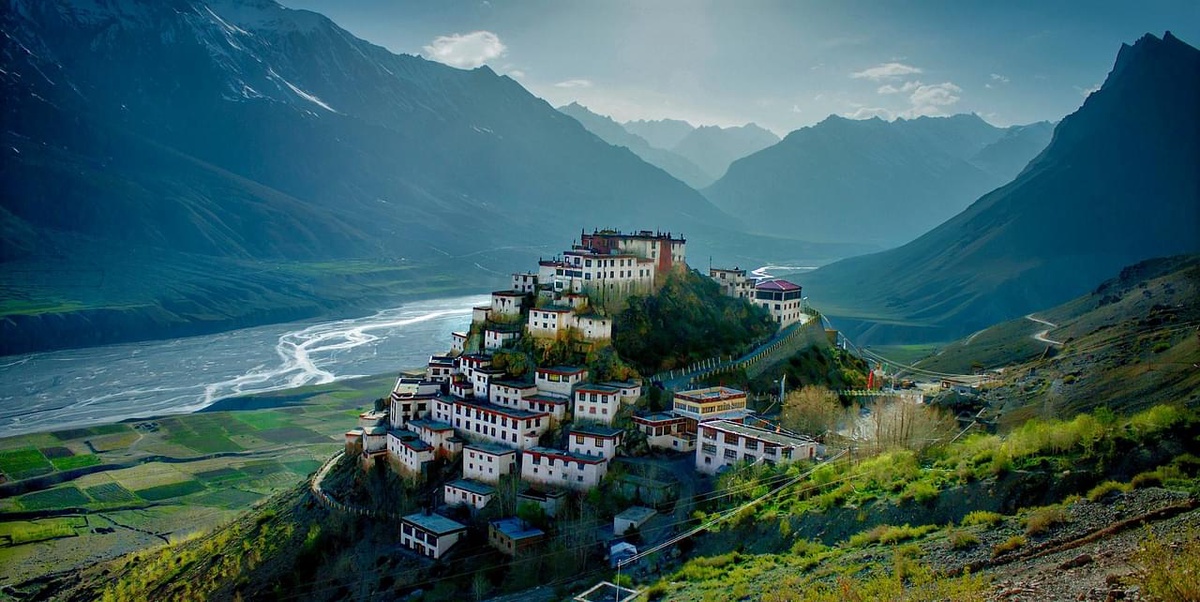Introduction
Curled up high in the remote reaches of the Indian Himalayas, Spiti Valley is a place of rare and breathtaking beauty. Often referred to as a "world within a world," Spiti is a high-altitude desert region that has captured the hearts of intrepid travelers, adventurers, and seekers of tranquility. In this 800-word article, we will delve into all you need to know about Spiti Valley, from its unique geography to its rich culture and attractions. If you like the trek then you also like Kodachadri Trek which uplifts your trekking experience and makes memories unforgettable.
Geography and Location
Spiti Valley is situated in the northern Indian state of Himachal Pradesh, sharing its northern border with Tibet, China. It's part of the larger Lahaul and Spiti district, and its remote location makes it one of the least populated regions in India. The valley stretches across 4,000 square kilometers and is characterized by its rugged terrain, deep gorges, and towering peaks. The valley's altitude varies between 3,600 meters (11,800 feet) to over 6,000 meters (19,685 feet) at its highest points.
The High-Altitude Desert
One of the most remarkable features of Spiti Valley is its high-altitude desert environment. This stark and barren landscape is a stark contrast to the lush greenery often associated with the Himalayas. Despite its seemingly inhospitable terrain, Spiti's valley floor is blessed with the fertile Spiti River, which originates from the Kunzum Range and provides sustenance to the sparse vegetation and small settlements scattered throughout the valley.
Weather and Best Time to Visit
Spiti Valley experiences extreme weather conditions, with frigid winters and short, cool summers. The valley is largely inaccessible during the winter months due to heavy snowfall. Therefore, the best time to visit Spiti is from late May to early October when the weather is relatively mild, and most roads are open.
Local Culture and Traditions
Spiti Valley is home to a unique culture deeply influenced by Tibetan Buddhism. The majority of the population in the region follows Tibetan Buddhism, and numerous monasteries or gompas dot the landscape. Key monasteries include Key Monastery, Dhankar Monastery, and Tabo Monastery, which is one of the oldest functioning monasteries in the world, dating back to the 10th century.
Visitors to Spiti have the opportunity to immerse themselves in this rich cultural tapestry. You can witness prayer flag ceremonies, attend traditional festivals like Losar and Cham, and explore the centuries-old frescoes and murals that adorn the monastery walls. The locals, known for their warmth and hospitality, often welcome travelers to participate in their rituals and celebrations.
Spectacular Landscapes and Natural Wonders
Spiti Valley is a treasure trove of natural wonders. The stark, barren mountainscapes, punctuated by the pristine Spiti River, offer breathtaking vistas at every turn. Some of the must-visit places in Spiti include:
1. Chandratal Lake:
Often referred to as the "Moon Lake" due to its crescent shape, Chandratal is a high-altitude lake surrounded by towering peaks. The reflections of the mountains on the crystal-clear waters make it a photographer's paradise.
2. Pin Valley National Park:
This national park is a protected habitat for the endangered snow leopard and hosts a variety of other wildlife species. It's a great place for trekking and wildlife enthusiasts.
3. Kunzum Pass:
At an elevation of 4,590 meters (15,060 feet), Kunzum Pass is a high mountain pass that connects Spiti Valley with Lahaul Valley. It offers panoramic views of the surrounding peaks.
4. Dhankar Lake and Monastery:
The ancient Dhankar Monastery perches precariously on a cliff, offering incredible views of the valley. A short hike from here leads to Dhankar Lake, a serene and picturesque spot.
5. Kibber:
One of the highest inhabited villages in the world, Kibber is a charming village known for its traditional houses and as a base for treks.
6. Langza:
Known for its picturesque setting and the famous Langza Buddha statue, this village offers a glimpse into the local way of life.
Adventure Activities
Spiti Valley is a haven for adventure seekers. The rugged terrain and challenging landscapes provide opportunities for trekking, mountaineering, and mountain biking. Some popular treks include the Spiti Valley Trek, Pin Parvati Pass Trek, and Parang La Trek. The region also attracts motorbike enthusiasts who come to conquer the treacherous roads and high mountain passes.
Local Cuisine
While in Spiti, be sure to savor the local cuisine. Tibetan-inspired dishes like momos (dumplings), thukpa (noodle soup), and butter tea are popular choices. Additionally, you can try the unique barley-based dishes like tsampa and chang, a local alcoholic beverage.
Responsible Travel
As you explore Spiti Valley, it's essential to be a responsible traveler. Respect the local culture and traditions, follow eco-friendly practices, and leave no trace. The fragile ecosystem of the region deserves our care and preservation.
In conclusion
Spiti Valley is a land of stark beauty, ancient traditions, and rugged adventure. Whether you seek solace in its serene monasteries, test your mettle on high mountain passes, or simply soak in the awe-inspiring landscapes, Spiti Valley has something to offer every traveler. This high-altitude desert paradise remains one of India's hidden gems, waiting to be explored by those who are willing to venture off the beaten path.


No comments yet